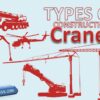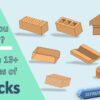When you’re working on a concrete masonry unit, there’re some unique concepts and one of them is bond beam. It is stiffening or a tying beam that goes along top of wall, floor and foundation connections.
In masonry walls, there’re number of beams relevant like tie-beam, lintel beam, and bond beam. Well, the concept of tie and lintel beam is more common in brick masonry walls. In CMU construction, bond beam is a more common provision.
So, our today’s read is about what is bond beam, its design details, its different sizes, and what are some pros and cons.
What is a bond beam?
A bond beam is horizontally reinforced structural element which is provided in masonry walls at different heights for horizontal strength. It resists lateral and shear loads by distributing the load throughout the wall section.
Bond beams are also used as U-shaped masonry units which are empty from inside and reinforced with steel and filled with concrete to make block unit as one structural element. Bond beams are usually found at the top of foundation walls, at the mid of walls and at each floor diaphragm connection.
Bond beam is used in load bearing walls to strengthen the walls and to increase the structural load capacity of walls.
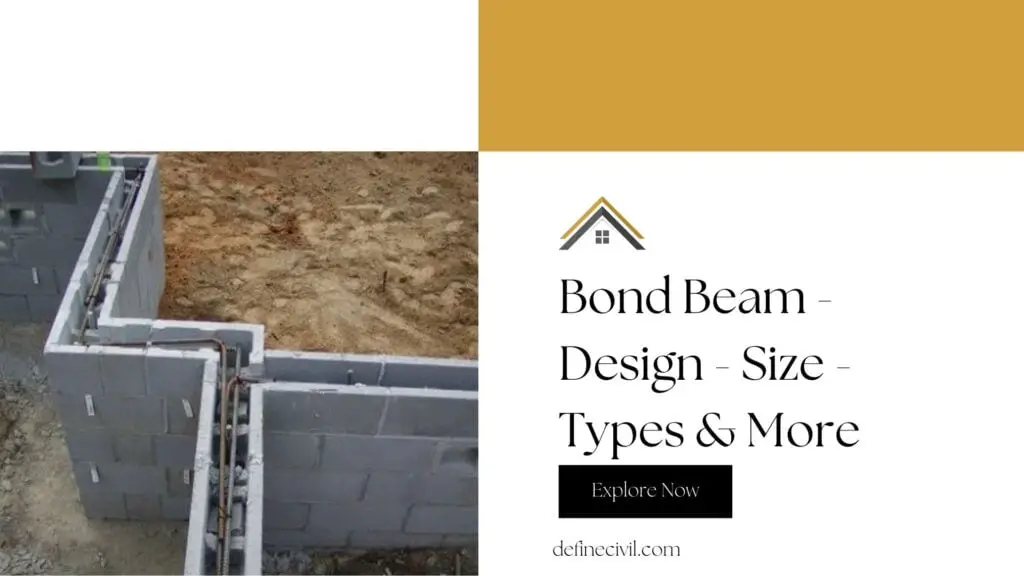
Bond Beam Design
The most common of bond beam types is bond beam CMU. That’s when we use bond beams in concrete masonry unit walls. A special bond-beam unit that’s somewhat different than lintel beam unit is used.
Bond-beam masonry unit has a reduced-height across webs and the hollow core is afterwards grouted solid. It is typically one course tall and can be found at locations like top of foundation walls, top of walls, floor-diaphragm connection. In highly active seismic zones, you may need to use intermediate bond beams.
The use of metal or plastic mesh for grouted bond beams is very critical. It prevents the grout from moving out of the block. The purpose of using the mesh is to grout only the beam and there’s no wastage in filling the vertical cells all the way down. We place the mesh just below the beam. The mesh can be of any size but it must be fine enough to prevent grout escaping.
Purpose of bond beam
- Bond beam is used with horizontal reinforcement in concrete which helps to embed the horizontal reinforcement with vertical reinforcement in masonry construction.
- Bond beam is placed after suitable distance at height of masonry walls to place the reinforcement more than possible.
- Bond beams are used for structural support for storms, wind load, extreme weather conditions and for high seismic areas to provide stability and strength.
- Bond beam is also known as lintel beam when used above door and windows. As we know that windows and doors are openings for ventilation and entrance and non-load bearing members. The weight of masonry above doors and windows are supported by bond beam.
- Bond beam also reduces the cracks in walls which can occur due to structural loads and due to contraction and expansion. Bond beam is effective in cracks management and increase stability of structure.
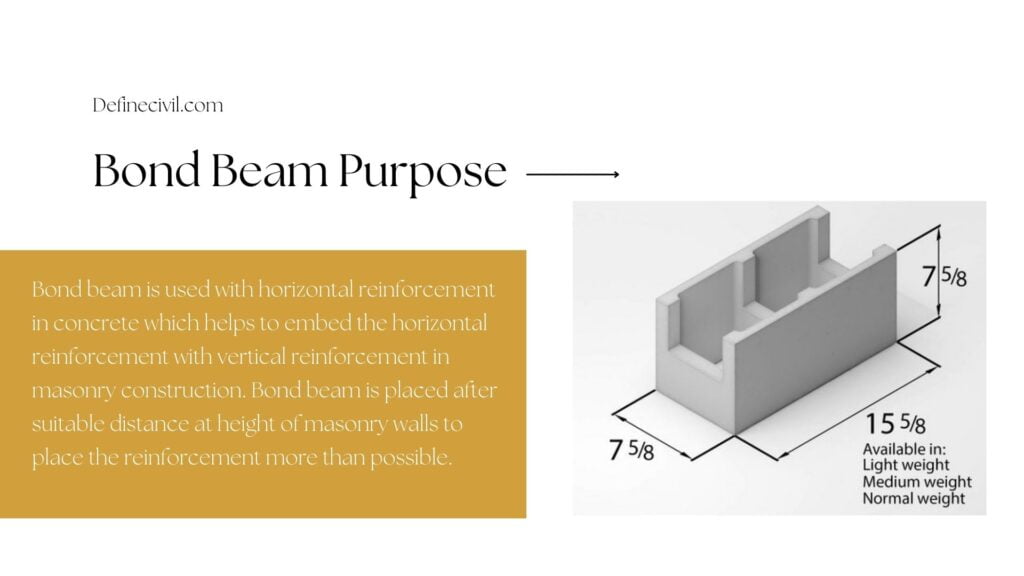
Types
Various types of bond beams based on material are explained below.
Brick bond beam
A brick bond beam is a beam which is provided by joining the bricks of standard size in horizontal direction and bind with mortar. This type of beam is provided for light members and when there is less structural load coming over it. It has small openings which should not exceed 90cm.
Wooden bond beams
Wooden bond beams are made of wood of good quality and of high strength. Wooden beams were more common in ancient times when there were light structures and loads on structures were not heavy. Wooden beams are also used nowadays in remote areas and villages. It is used as a lintel beam above doors and windows to protect the windows and doors from loads of masonry above it.
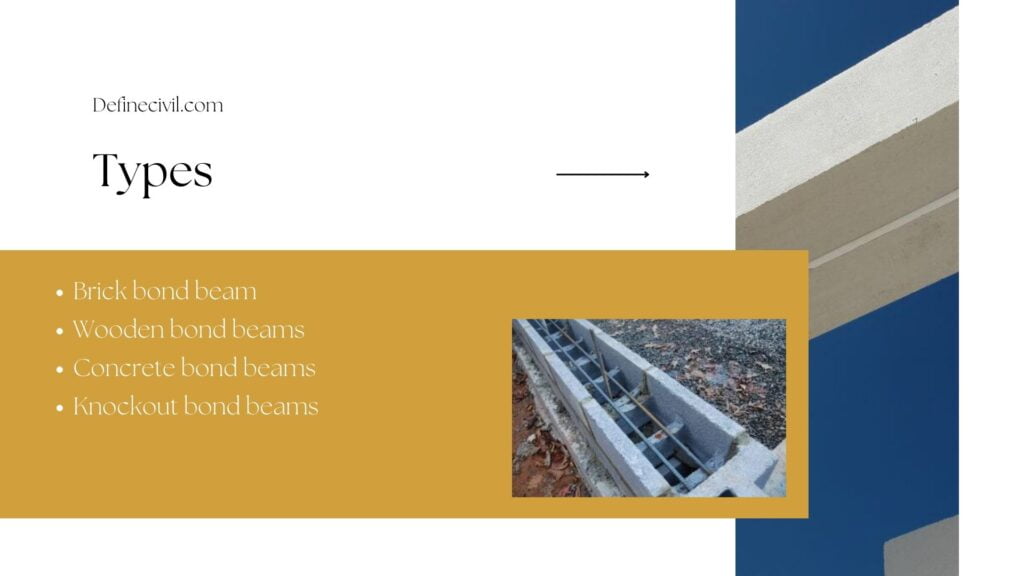
Concrete bond beams
Concrete bond beams are made of reinforced concrete of different size depending upon the load to be carried. Concrete bond beams are more popular nowadays because of its high strength and good bonding with steel. Concrete bond beams are provided at different heights in masonry walls. It provides more strength with same size of beam as that of other materials so concrete beams are more preferred.
Also Read: Concrete Retarders – Disadvantages – Types – Uses – Price
Knockout bond beams
This type of bond beam is made of concrete masonry blocks. These blocks are U shaped which are empty from inside and joined together with cement and concrete is filled inside the blocks. There are two options available for installing reinforcement in this bond beams. One is web section and other is knockout section for adding reinforcement.
Advantages of bond beam
Strength
Bond beam is used in buildings to increase the load carrying capacity of structure. This type of beam is provided at different levels with suitable thickness. The reinforced concrete beam increases the load carrying capacity because of its high modulus of elasticity and its application.
Stability
The bond beam provided after suitable interval also increases the stability of structure which helps to stabilize structure when there is a lateral force acting on structure, severe weather conditions or in case of earthquake.
Support and anchoring
The other benefit of providing bond beam is that it provides support and take load of masonry above door and windows.it helps in joining the vertical reinforcement with horizontal reinforcement provided in RCC walls. The bond beam also helps in anchoring floor joists.

Crack reduction
A bond beam used nowadays is made of reinforced concrete which is flexible to some extent because of addition of reinforcement. The bond beam helps in reducing cracks in building walls which can occur due to structural loads or due to expansion or contraction.4
Disadvantages of bond beam
Bonding issue
A bond beam is made of different materials like concrete, wood, or bricks. Different materials have different value of adhesion due to which it creates a bonding issue. The weak bond between beam and masonry creates a weak joint which can create a structural failure.
Require Skilled Labor
The provision of bond beams at different levels which can satisfy loading requirements and stability requires skilled labor.
High construction cost
In case of heavy loads and multistory buildings with load bearing walls the construction cost of bond beam increases. The bond beam requires high grade concrete with more reinforcement to satisfy the loading and structural requirements.
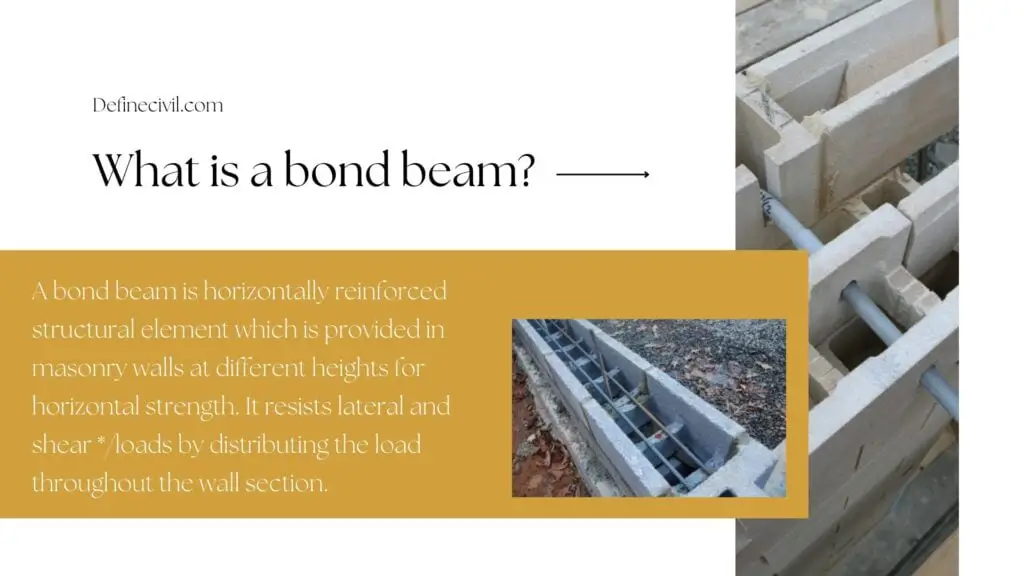
Construction Tips
Well, if you’re considering to use bond beam for your project here’re some tips and tricks that might help you in your way of construction:
- The steel reinforcement in bond beam can create difficulty for the flow of grout. So, you can either use some techniques for grout consolidation or you can minimize the reinforcement to avoid congestion. You can use bigger dia rebar with more spacing – but make sure to check with the code and loading conditions.
- Always use L-shape corner bars along the masonry corners. Use proper lapping of corner bars with bond beam steel so stresses can flow continuously.
- Unless the bond beam is acting as a diaphragm for the floors, it is best to cut bond beam reinforcement at expansion and control joints. In most codes, lateral continuity across movement joints is not a structural requirement.

Bond beam vs lintel beam
Well in CMU, lintel block is somewhat different than a bond beam block. A bond beam block can be used anywhere in the course of a wall. Lintel blocks, on the other hand, must go over an opening like a doorway or a window.
Read More: Lintel Beam – Design – Meaning – Construction – Types – is it necessary?
The main difference between two blocks is that lintel blocks don’t allow the vertical bars to move across them. Bond beam block on the other hand allow both vertical and horizontal reinforcement to pass.
As each block has a different purpose and a different usage, so it is critical to select the right type for the right job.
Further read: What is a flitch Beam? – Purpose – Benefits – Thickness (Know ALL)
Thank for reading all and coming all the way down. As you’ve loved the article, I bet you’ll love of my write-ups.
I focus all such masonry units, their tricks and how you can choose materials for your construction projects.
Make sure to share your thoughts below and subscribe to my newsletter to get latest insights everyday!
Grab a free PDF Info-Sheet
Grab a free copy of PDF infosheet about bond beam for free by clicking the button below:









